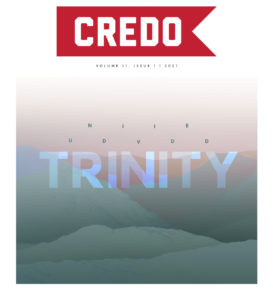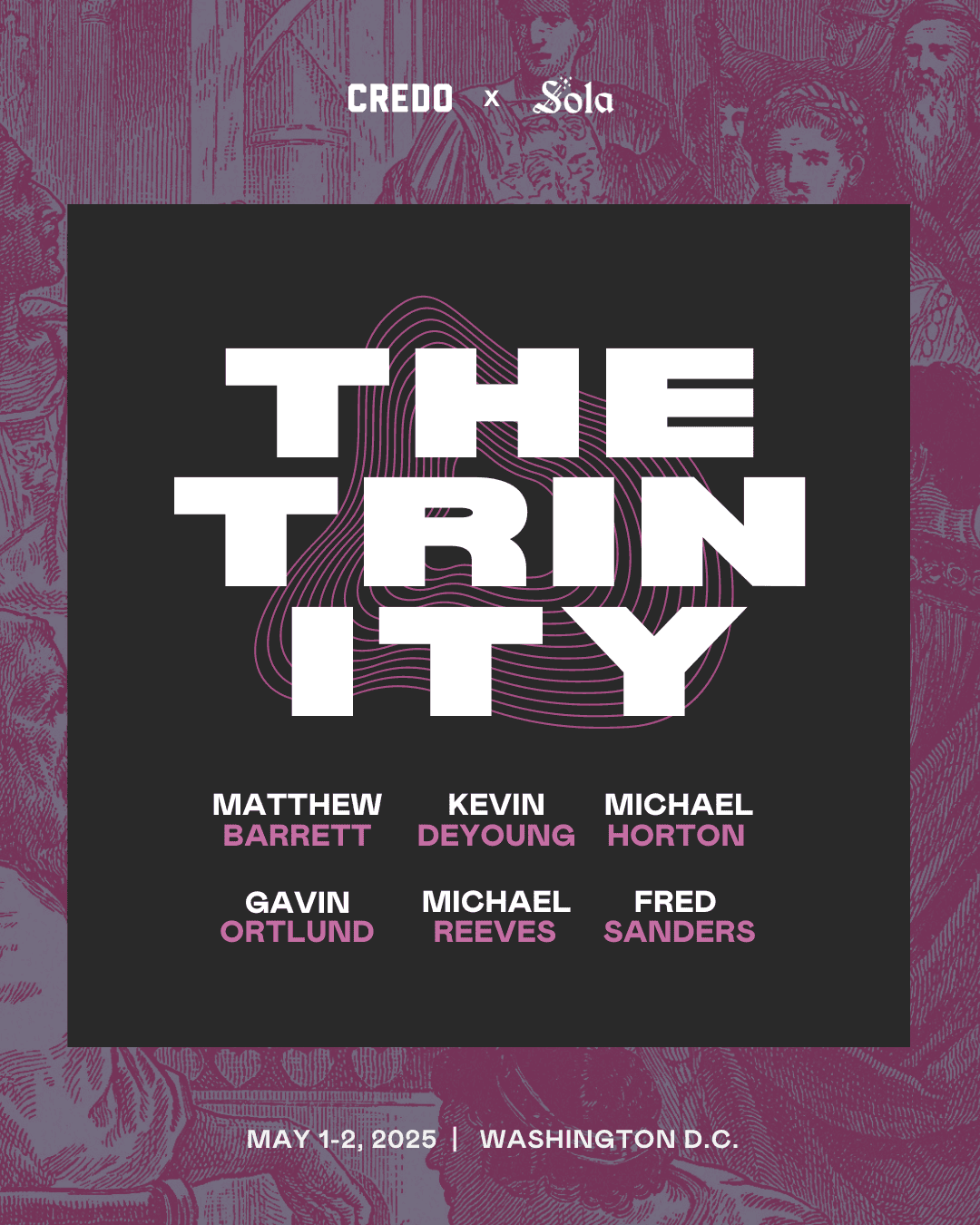For both teachers and pastors, the doctrine of the Trinity has been one of the most demanding topics, often resulting in glazed-over student eyes, or in yawning parishioners thinking ahead to Sunday lunch or football. Needless to say, neglect of such a foundational doctrine, which has been called a “distributed doctrine”[1] because of how broadly its tentacles spread throughout the system of doctrine, will have cascading consequences. In recent years we have observed the retrieval of important aspects of trinitarian orthodoxy, including the doctrine of eternal generation, the ontological (and functional) equality of the divine persons, in some quarters the doctrine of the filioque, and an additional aspect which forms the focus of this article: inseparable operations.
Inseparable Operations and Contemporary Confusion
Simply defined, the doctrine of inseparable operations affirms that the triune persons act as a single agent externally, while internally their operations are divided.[2] Easy to say, harder to understand, even harder to teach and preach! Having taught this doctrine to graduate students, with particular emphasis during the last ten years, it is one of the most counter-intuitive doctrines they will have encountered in seminary. This is evidence for the domination of a functional tritheism in our churches, sometimes generated by a social understanding of the Trinity. By a functional tritheism I mean the belief that the different divine persons do their own thing, each having their own role, and each being responsible for certain effects. Most crudely, the Father alone is often thought to create, while only the Son redeems and only the Spirit sanctifies or perfects. Or, in what is one of the most damaging caricatures of all, the stern Father awaits in heaven for the Son to complete his mission, upon which he acts, restoring fellowship with sinners and sending the Holy Spirit. It gets worse when we begin to reflect on the cross itself: either the Father turns his eyes away from the Son, or the Father unilaterally acts to punish the Son, or the Father breaks relations with the Son, etc. These images populate our sermons, they have penetrated our hymnody, and they shape our collective consciousness.
And yet the Christian tradition has been consistently resisting such an understanding of the external operations of the triune persons. The distribution of such actions and roles among the persons indicates that they have separate substances, that is, that they are separate beings. No matter how closely such actions are coordinated, how symphonically they weave together, they remain the actions of distinct beings. Some have tried to jazz this up by speaking of a perichoretic dance of the persons, one that is not scripted, but which ultimately resolves into a greater and mysterious unity. Yet, even in the most intimate dance there are two dancers, two beings. The unity they make up is a composed unity, that is, a unity which presupposes the existence of the various parts. Not even the most raging heretics in the hey-day of heresy could entertain such a thought, all too common today. Why not? Because anything which is composed cannot be perfect. A composed being depends on its parts, which are prior to it. Moreover, since nothing puts itself together, a composed being requires an assembler, a creator, and thus cannot be the ultimate being. There is a functional tritheism in our churches, sometimes generated by a social Trinity. As if the divine persons do their own thing, each having their own role. Share on X
Despite this, the persistence with which we talk about the various roles (another euphemism for parts) of the divine persons in the external operations of God indicates that we are bewitched to that picture of three agents cooperating and coordinating. There is a very good two-fold explanation why we cling to this picture, however. First, as a people of the book and of revelation, we apparently cannot make sense of these operations except on the model of three distinct divine agents. Secondly, and related to this, certain non-negotiable dogmas seem to be incompatible with the idea that God acts externally as a single agent: the doctrine of the incarnation of the Son alone being the most obvious one.
Let’s combine these in a set of questions: doesn’t the Bible itself portray separate agents, particularly in how they relate to one another? Doesn’t the Father speak to the Son? (Jn 17) Doesn’t the Son have to ascend first, before the Spirit comes? (Jn 7:39; 16:7) Isn’t it just the Son that has become incarnate, suffered, and died? These are exactly the kinds of objections students of theology formulate against the doctrine of inseparable operations. So deeply entrenched is this picture of the Trinity, and its coordinated operations, that the classic doctrine that God acts inseparably as a single agent has become incredible and counterintuitive. 
In what follows, I would like to suggest two pictures which suggest a different imagination. Together these two images can help us understand why the objections to the inseparability doctrine arise; and they provide an alternative angle from which the objections are defused.
Expanding Our Imagination
The first image is suggested by Edwin Abbott’s 1884 novella, Flatland. In this imaginary tale, we encounter a two-dimensional being living in so-called Flatland, among other such beings, having various geometric forms: triangles, circles, rectangles, hexagons, and so on. These geometric forms are sentient beings that interact and speak with one another. Now into this two-dimensional world, a three-dimensional sphere makes its appearance. At first it only speaks to our Flatlander, who becomes conscious of a presence, at first, but sees nothing. The sphere then manifests itself to the Flatlander, at first by passing through his two-dimensional plane. At this point the Flatlander sees a circle, but one which, unusually, appears out of nowhere, then increases, and then gradually shrinks until it disappears again. The sphere explains that it is a being coming from a higher dimension and tries to explain this third dimension to the Flatlander, but to no avail. He simply lacks the categories to grasp the mystery. Eventually the sphere proceeds to lift up the Flatlander into Spaceland, giving him an experience of three-dimensional reality. The story continues, but for our purposes we have said enough – due apologies for the spoilers. I will tease out the theological lessons once I have introduced the second image.
For our second image, think back to elementary physics and the lessons on magnetism. We are all familiar with natural magnets. There is much we still do not understand about them, but some things are plain enough. We know that a natural magnet has two poles, called North and South, with various magnetic charges. We know that we cannot separate the two poles from each other and thus that they are not parts of the magnet. Once a magnet is cut in two, each side will generate its own two poles, which are in fact a function of the magnet’s magnetism itself. We are all familiar with the fact that magnets attract metallic objects and that these objects attach themselves specifically to one of the poles of the magnet. Since the poles are not parts of the magnet, or substances, but rather functions of a magnetic relation, the attraction of, say, a needle is not done by any of the poles, but by the magnet itself, despite the fact that only one of the poles “receives” the object. Now that we have sufficiently refreshed our memory of our elementary physics, let’s see how these two images may help us.
The first picture illustrates the fact that our first-hand experience of a transcendent being is not always to be taken at its face value. The Flatlander’s experience is of a circle, and yet the sphere far exceeds that circle. Moreover, he cannot reconstruct or imagine what the sphere looks like based on his experience alone, since he lacks the capacity for it. Without the propositional revelation of the sphere, he would only be conscious of an anomaly, something unexplainable in his categories. This cautions us about how we are to interpret revelation. The phenomenological circle in his experience is indeed a clue, but it is insufficient for him to form an adequate image. He finds out that he must not take it at its face value. By implication, even though in revelation we are introduced to what seem to be varying operations of the triune persons, these need not be taken at their face value.
Take Jesus’ baptism (Mt 3:13-17), for example, where one hears the voice from heaven (one action), one sees the Son of God being baptized (another action), and the Spirit descending upon Christ in the form of a dove (a third action). Phenomenologically, we are experiencing three separate agents, doing separate things. Other aspects of our biblical experience seem to indicate something similar: all the interactions between the divine persons, whether they be Jesus’ praying to the Father, Christ sending the Spirit, even the various pre-figurations of the Son (Dan 7:13-14) and Spirit (Gen 1:2) in the Old Testament. Were these to be taken at their face value, we would have to conclude that we have encountered separate agents of separate actions.
And yet this is not the whole story. For, just as Abbott’s sphere propositionally reveals to the Flatlander that it is not just a circle, or just a voice, so Christ propositionally reveals that there isn’t a separate agent beyond him. When Philip asks him, “Lord, show us the Father and it will be enough for us” (Jn 14:8), Jesus responds that “the Father who dwells in me does his works.” (Jn 14:10). Throughout the Gospel of John, Jesus describes his own works as being the self-same works of the Father (Jn 5:17,19; 10:25-26,29-30; 14:10). In addition to that, to Christ is ascribed the very act of creation (Mk 4:41; 1 Cor 8:6; Col 1:16; Heb 1:2, 2:10), which is the unique and quintessentially divine act (Isa 44:24). Again, this ascription belongs to the propositional content of revelation, without which Jesus could not have been identified as divine. On the basis of this propositional revelation, Christ is shown to be one with the Father, sharing the same divine actions. Apart from such propositional revelation we would at best conclude that Jesus is a supernatural agent of some kind.
But what about the clear cases where Jesus speaks to the Father (Jesus’ baptism and personal prayer)? If Christ’s operations are also the Father’s, and if, say, Christ’s prayer is an operation, is that simply the Father praying to himself? This is where the second image, of the magnet, can be of some service. For in the case of the prayers of Christ we cannot make abstraction of the fact that the incarnate Son of God has a human nature. The prayers that Jesus offers clearly presuppose a strictly human submission and obedience. Because of his human nature, the Son has both a divine will (identical with the Father’s) and a natural human will, which is exercised and actualized in prayer. The human nature is like the needle attached to one of the poles of the magnet. The needle is moved by the whole magnet, yet it comes to exhibit the mode of just one of the poles.[3] Christ’s human nature enters into the Trinitarian life at the point of the Son. But, like the magnet, this life has a non-hierarchical order (from the Father to the Son to the Spirit). Prayer and obedience are the proper expression in human nature of the Son’s mode of existence, received from the Father (Jn 5:26).
The Trinity and the Incarnation
The illustration of the magnet thus allows us to respond to a major dogmatic objection to inseparable operations: the objection from the incarnation of the Son alone. Just as the needle is drawn by the magnet as a whole, so is the incarnation the work of the whole Trinity; and just as the needle attaches distinctly to one of the poles, so the human nature of Christ is united distinctly with the Son of God. And just as the circle is but the shadow left in Flatland of the passing sphere, so the human nature of Christ is not to be simplistically confused with the Son, or with the whole Trinity. It is precisely God the Son, incarnate in human form. The persons of the Trinity are not separable parts of God but are defined and constituted by their relations with each other within the divine substance. Share on X
The magnet can be of further use in helping us understand how the doctrine of inseparable operations naturally follows from the doctrine of divine simplicity and aseity. Just as we must distinguish between the inherent magnetism of the magnet and the action of the magnet upon needles, so we distinguish between the ad intra operations (the eternal generation of the Son from the Father, and the eternal procession of the Spirit from the Father and the Son) and the ad extra operations of the Trinity. Like the magnetic poles, which are functions of the magnetic directionality, the persons of the Trinity are not separable parts of God but are defined and constituted by their relations with each other within the divine substance. The Son proceeds as the self-knowledge of the Father, and the Spirit proceeds as the love between the Father and the Son. Because the persons do not have their own substance, they have no distinct principle of operation (which is what a substance is). The only other way in which they might have their own operations is within the unity of the substance. But these operations ad intra cannot involve any external reality, for in that case the persons (and God himself) would be constituted by and thus depend on something created for their identity, which would be an absurdity.
Conclusion
The doctrine of inseparable operations is by no means simply a deductive implication of the divine unity and simplicity. It is first established by fidelity to biblical revelation, which teaches that Christ is doing the exact same works of the Father, starting with the unique act of creation. We do not experience as such this unity of the operation any more than the Flatlander experiences the sphere as such. Yet we confess it and believe it on the strength of the biblical revelation. It is because we recognize Jesus as sharing the works of the Father that we can confess his divinity. Thus, the doctrine of the Trinity ultimately rests on the biblical datum of inseparable operations. But the reverse is also true: triune unity necessarily implies the inseparability of God’s external operations. Because the persons do not partition the divine essence, and because God does not depend in any way on anything outside of Godself, the persons always act in the world in virtue of their common nature, and thus inseparably. This doctrinal rule is consistent with biblical revelation, properly understood, and with the affirmation of the incarnation of the Son alone.
Endnotes
[1] John Webster, T&T Clark Reader in John Webster, ed. Michael Allen (Bloomsbury, 2020), p. 109.
[2] For a biblical and theological defense of this doctrine, see Vidu, The Same God Who Works All Things: Inseparable Operations in Trinitarian Theology (Eerdmans, 2021).
[3] Here the analogy misfires, for the needle receives the magnetic charge of the pole to which it isn’t attached.


